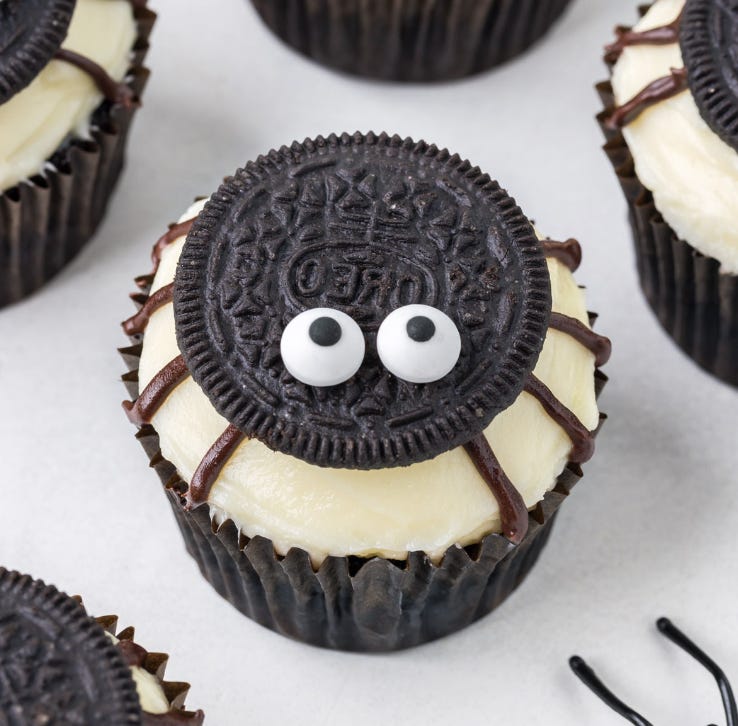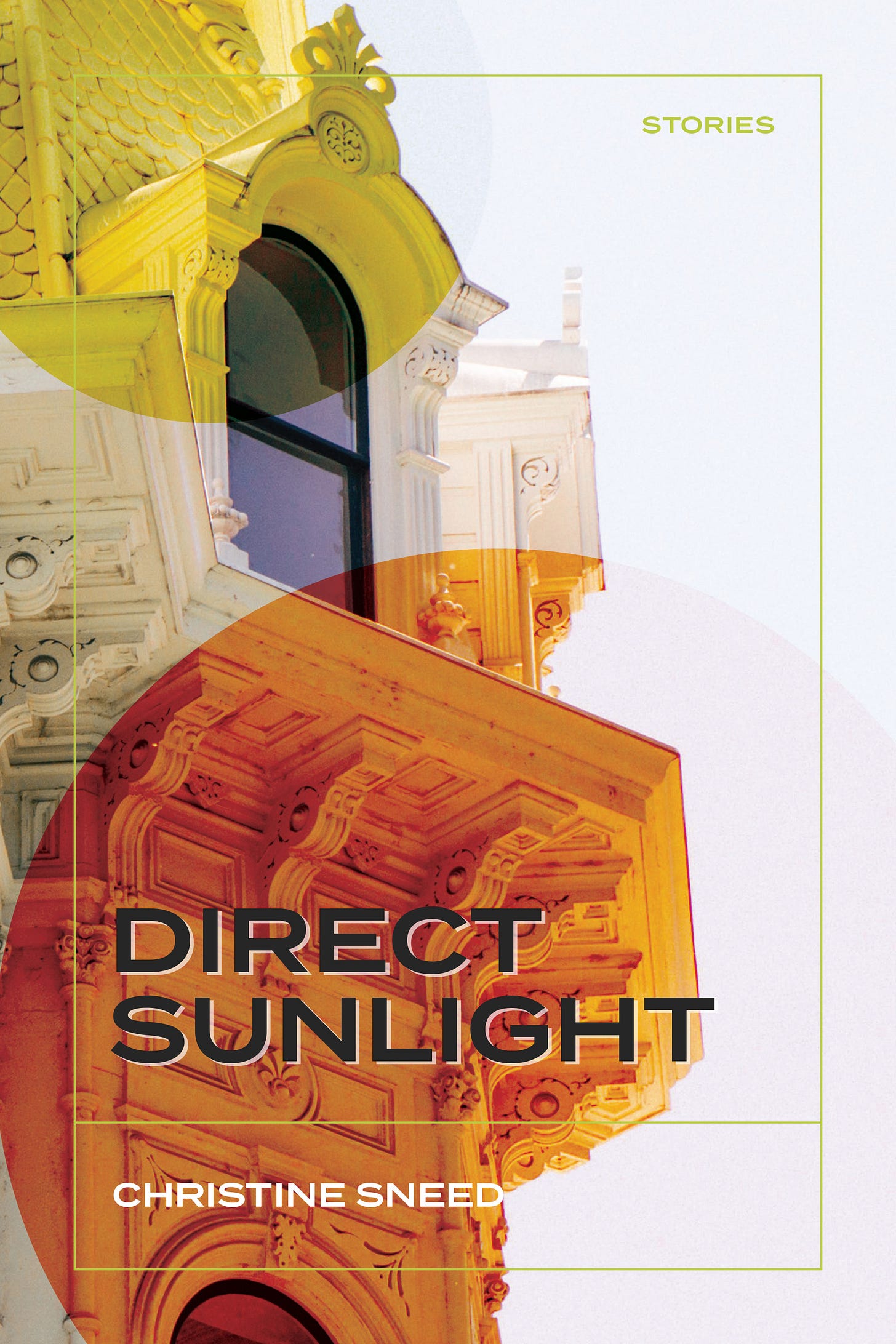Two Halves of Two Wholes
Magic Bag of First Lines II & 2nd Half of Direct Sunlight interview
Last week I traveled even further down the rabbit hole of social media and under quasi-duress, started an Instagram account (@nugradwriting) for one of the MFA programs I teach for. Flouting good reason, I also started a personal account (@christinemsneed) - if you’re on there too, let’s connect.
And one other small news item: subscriptions to Bookish are 15% off—both monthly and annual—through Oct. 20.
If you’ve been keeping up even marginally with the news cycle, you’re probably feeling some combination of alarmed, bereaved, and exhausted. I hope today’s letter will be easy to digest, a sort of twist cone of a post: the second installment of “Magic Bag of First Lines,” and the second half of the interview fellow fiction writer Karin Lin-Greenberg did with me earlier this year for my third story collection, Direct Sunlight.
Karin’s questions are so good I pretty much have to remember her in my will. (I’ll make sure to leave her enough for at least a few big boxes of Cheryl’s cookies—which my friend Kim in Chicago introduced me to last Christmas—in so doing, she inadvertently created a portal from which my innate 🍪 monster has emerged.)

Cheryl’s cookies, by the way, are criminally good—especially the frosted sugar cookies and the chocolate marshmallow (vegan varieties, but most of their cookies aren’t vegan).
Okay, enough with the friggin’ cookies, I know! Here are some first lines:
He had forgotten the phone number he was told absolutely not to forget.
She preferred the beach; her mother preferred the mountains.
It’s not so bad being an only child.
He didn’t invite Alex, his best friend, to his wedding because Alex knew his most damning secrets.
At all hours, the ambulances race up and down the street with sirens shrieking.
The party ended at midnight, an hour before the storm began.
She’d spent all weekend baking bread, coffee cake, and cupcakes.
The orange trees were hit by frost two nights ago.
On vacation—that’s when you really get to know someone.
Sometimes he woke up at four in the morning and couldn’t get back to sleep.
That was the year everyone they were closest to moved away, got divorced, or had the gall to die.
The suitcase burst open like a jack-in-the-box on its way down the baggage claim conveyor belt.
His sister’s plane was an hour late, but traffic to the airport was so heavy he still managed to be ten minutes late picking her up.
In the park, the man in the blue vest released a large cluster of red, green, and yellow helium balloons into the sky.
A squirrel was chasing another squirrel and a child was eating cotton candy.
Two boys across the street were telling knock-knock jokes and laughing like maniacs.
After dark the sound of crickets fills the night, and we like to sit out on the patio and listen.
The paperboy keeps throwing our newspaper onto the neighbor’s lawn.
The first part of Karin Lin-Greenberg’s interview with me about Direct Sunlight can be found in the September 12 Bookish post, “Winning Lottery Numbers.”
And the remaining Q and A:
KLG: I thought a lot about the shape of a triangle with many of the conflicts in this collection. There were multiple stories featuring three characters, all with different goals and desires. For example, in “The Swami Buchu Trungpa,” you have the protagonist Nora, her boyfriend Swami Buchu Trungpa (real name: Jim Schwartz), and Nora’s mother, Regina. In many ways, Nora is torn between the desires of her boyfriend and her mother and is also torn between her loyalty to each of the characters. There’s even a line in the story where Nora tells Buchu, “I’m not choosing between you and her.”
In “Where Do You Last Remember Holding It?,” there are three characters–a mother with memory loss and her two daughters–and the tension in the story is related to who will take care of the mother as her dementia worsens. Did you intentionally set up these triangulated stories, and can you discuss how this triangulated structure puts pressure on the protagonists?
CS: The triangulation wasn’t premeditated. To be candid, I don’t know if I’d ever thought of it specifically before reading your question! But mulling it over now, I realize I’ve been trained to gravitate toward the triangle as a writer through the archetypes that are so prevalent in the media we consume–the love triangle, for example, being one of the most pervasive archetypes for storytelling.
Couples certainly are capable of creating more than enough dramatic tension in a narrative, and that two-handed dynamic likewise interests me greatly, but the triangle can be even more compelling (depending on what kind of story you’re telling) because there are three origin points for tension, three different emotional systems and consciousnesses, three possibly jealous or vindictive or smitten people, from which all sorts of interpersonal chicanery might arise.
As the maxim states, “Two’s company, three’s a crowd.” The feeling of being crowded and how the three characters each handle it–what an interesting situation for a fiction writer to explore.
KLG: Something I admired so much in the stories in this collection was your use of exposition and summary. Writers often get the advice “show, don’t tell,” but I think your stories are excellent examples of how much work specific and precise exposition can do for a story. These passages helped me quickly understand pivotal parts of the characters’ backstories and why they believed certain things or behaved in certain ways during the action of the stories.
For example, in “Mega Millions,” we get this description of one of the characters, Bernadette: “She had always been a generous person, baking two cakes for everyone's birthday, buying too many gifts, giving away more than half the vegetables in the garden to the neighbors each year.” Just that one sentence sets up so much (and helps explain why she’s so willing to give away a great deal of the money her husband has won in the lottery). I think the fact that she makes two cakes for everyone so quickly and efficiently reveals so much about the level of her generosity.
Can you talk about how you figure out what backstory to include in exposition and summary and where to include it in short stories?
CS: One of my favorite writers, Alice Munro, included a lot of summary in her stories, and I’ve always admired how propulsive her narratives are. I don’t miss the dialogue because somehow she manages to keep the story briskly moving forward. She’s also a master at description and the telling detail. I think often of how she described one of her characters’ fatigue–I think she phrased it as “the greed for sleep.” I must have read that line 20 or more years ago but it’s obviously stayed with me.
Most of the time, I’m not consciously thinking about balancing scene and summary; this too is instinctive, but I will say I’ll always favor more details over fewer. When students have said to me over the years, “I didn’t add more detail because I didn’t want to bog down the story,” my reply is that they should include a lot of details–they can always pare them down later.
Stories by beginning writers frequently have too few details. My advice to them never varies: “Layer in as many details as you can. I want to see who these characters are, what they’re doing, where they are. Tangentially, I was listening to a talk last night with screenwriter Charlie Kaufman, and when the interlocutor asked him to share the best writing advice he’d ever received, he said, “If you can’t see it, don’t draw it.”
If you’re going to write it, you (and later, your reader) need to be able to see it.
KLG: You’ve employed borrowed forms in your fiction before (I’m thinking of Please Be Advised, your novel written in inter-office memos, and your story “The New, All-True CV,” which is written in the form of an annotated CV). I loved seeing similar forms crop up in this collection including emails in “The Monkey’s Uncle Louis,” “Direct Sunlight,” and “In the Park”; a Yelp review and newspaper article in “House of Paine”; Facebook messages in “The Petting Zoo”; a list in “Mega Millions”; and letters sent to a newspaper advice columnist in “Dear Kelly Bloom.”
What draws you to these borrowed forms? What do you think they provide that you might not be able to capture in a more traditional story form?
CS: They’re such fun to write, and I feel freer when I find an opening for one in a story. It’s almost like a frame tale–the first, overall story providing the frame for the borrowed-form story–as if it’s the molten center of a chocolate cake. You get two desserts! A piece of chocolate candy and a cake!
Adding a letter or an email (or a memo) also allows for a point-of-view shift, i.e. if your story is in third-person, your letter will most likely be in first.
These borrowed forms are also, on the whole, voice-driven, and you can do some interesting characterization with them. The potential for humor and pathos is also elevated. Sometimes it’s almost as if you get to be the comedian doing a slew of impressions.
KLG: One of my favorite stories in the collection is “In the Park,” which I found funny and heartbreaking and poignant. Much of the sadness in this story comes from the use of unsent emails, which allow readers to understand how Lauren, the protagonist, truly feels about her ex-husband, Mark.
In the sent emails, we see the persona she wants to project to Mark, but readers are given insight into her true emotions through the unsent emails. Could you talk about your decision to include unsent emails in this story?
CS: I so enjoyed writing this story, and I’m happy to hear you found it poignant. I really hoped it would strike readers as both sad and funny. I didn’t know when I started writing that it would turn out to be a story about a woman’s confusion over her husband’s unraveling–he’s struggling with mental illness and she can’t reach him, literally or figuratively. I think I began with the fact he’s someone she carried a torch for throughout her adolescence and never thought she’d succeed in making him fall for her too, but she does.
But then of course she loses him when he begins to struggle with mental illness and leaves her and their home, his medical practice, and the U.S. too.
Including the unsent emails allowed me to give her periods of catharsis, to express her deep loneliness and longing for her absent husband and her bewilderment over his disappearance.
Two recommendations:
‘s @BordoLines - always excellent. (Susan was recently inducted into the Academy of American Arts and Sciences. Brava!)For
, wrote this week’s “A Book I Wish More People Knew About” ( curates this column now for /Biblioracle) about Zoe Zolbrod’s memoir The Telling. I hope you’ll read Sarah’s essay and seek out Zoe’s excellent book too (Amazon link above - bookshop.org has only the MP3 CD listed).








Thank you, thank you!! I was away from here for a little bit, and when I came back I saw my subscriptions had increased unusually. Now I know why!
Sometimes an opening sentence contains the entire story:
"They were young, educated, and both virgins on this, their wedding night, and they lived in a time when a conversation about sexual difficulties was plainly impossible."
[Ian McEwan, On Chesil Beach]
Two others I like--the first for achieving the seemingly impossible--establishing a tone that makes such a story tolerable to read; and the other a great example of less is more:
"On the morning the last Lisbon daughter took her turn at suicide—it was Mary this time, and sleeping pills, like Therese—-the two paramedics arrived at the house knowing exactly where the knife drawer was, and the gas oven, and the beam in the basement from which it was possible to tie a rope. '
[Jeffrey Eugenides, The Virgin Suicides]
In the dry places, men begin to dream.
[Wright Morris, Works of Love]